Kevin Clarke
Operetta Research Center
26 November, 2023
At the small Gerhart Hauptmann Theater in Zittau (close to the Czech and Polish border in Eastern Germany) you can currently see a rare production of the 1978 DDR piece Prinz von Preußen, written by Dieter Brand and Harry Sander (music) with Helmut Bez and Jürgen Degenhardt (lyrics/text). This perfect example of “Heiteres Musiktheater der DDR” is a new staging by Kay Link, and it offers some dazzling performances.
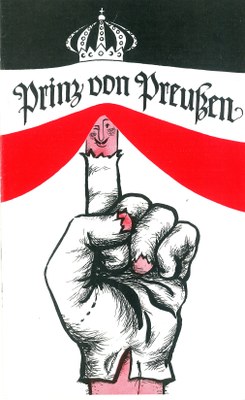
Cover of the program booklet from “Prinz von Preußen”, 1978. (Photo: musicallexikon.eu)
The piece tells the true story of 1920s imposter Harry Domela. He came to Berlin without any means and was mistaken for the grandson of the exiled emperor Wilhelm II. Right wing circles saw him as a sort of “messiah” who could help overturn the democracy and bring back the monarchy. Eventually, the hoax was revealed, by Harry himself, and the right wingers had to admit their error and confess to their political machinations.
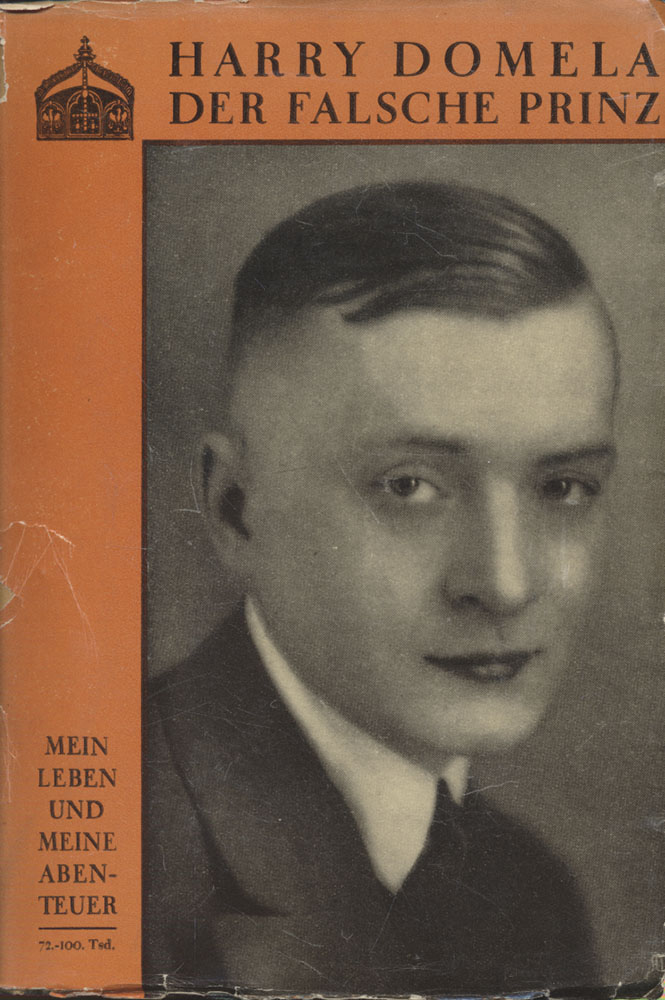
The book “Der falsche Prinz” by Harry Domela, published in 1927.
In real life, Harry was arrested and briefly imprisoned in 1927; he wrote his memoires behind bars, which became a bestseller. Back out he was a media star. Until he had to run from the Nazis in 1933: as a homosexual man and because he had participated in demonstrations of the communists. He eventually escaped to Venezuela where he stayed till his death in 1979, i.e. a year after the premiere of this musical.
The bouncy music by Brand/Sander – with dazzling orchestrations by Joachim Gocht – sounds very much like Gert Natschinski’s Mein Freund Bunbury – the most successful operetta/musical of the DDR. Even though that premiered as far back as 1964 the echoes still reverberate more than a decade later, possibly because Bez/Degenhardt are the same people who created Bunbury?
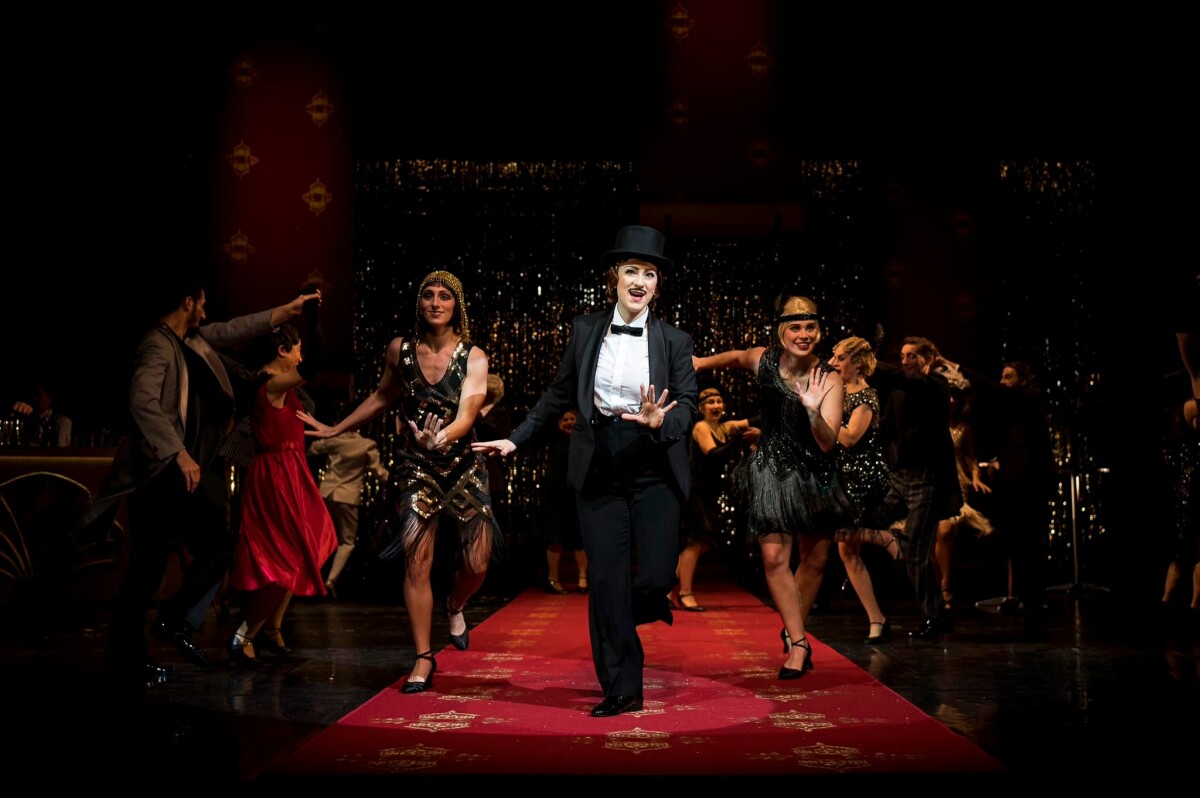
Kara Kemeny as Lily in “Prinz von Preußen”. (Photo: Pawel Sosnowski / Gerhart Hauptmann-Theater Görlitz-Zittau)
In the new production in Zittau, Kay Link tries to emphasize the gay aspect of the story by turning Harry’s love interest Lily – a journalists who helps him unmask the conservative circles – into an androgynous character with a fake moustache and a tux. Also, Harry’s best friend Max, a gangster and swindler, is shown with a group of muscle cowboys in pink (very à la Kosky) who sing about the blessings of going to the USA and working for a chewing gum factory. Turning Max into a possibly non-heterosexual character points to a different kind friendship between Harry and him. But that’s as far as any “queer” reading of the piece goes in Zittau. (Okay, Harry and Max do come out of the bathroom together at some point, zipping up their flies … as if they’ve just had sex. But since Harry was in bed with Lily a second before it doesn’t really make any sense and can easily pass you by unnoticed. At least it didn’t make any sense to me, which is why I forgot it immediately.)
Quite Irresistable
The performance I attended last Friday was completely sold out, which is surprising given the fact that it’s a mostly forgotten piece. But Mr. Link presents it in such a joyous and colorful way (with great dancing, choreographed by Enrico Paglialunga) and with such a bubbly cast, that the show is quite irresistible.
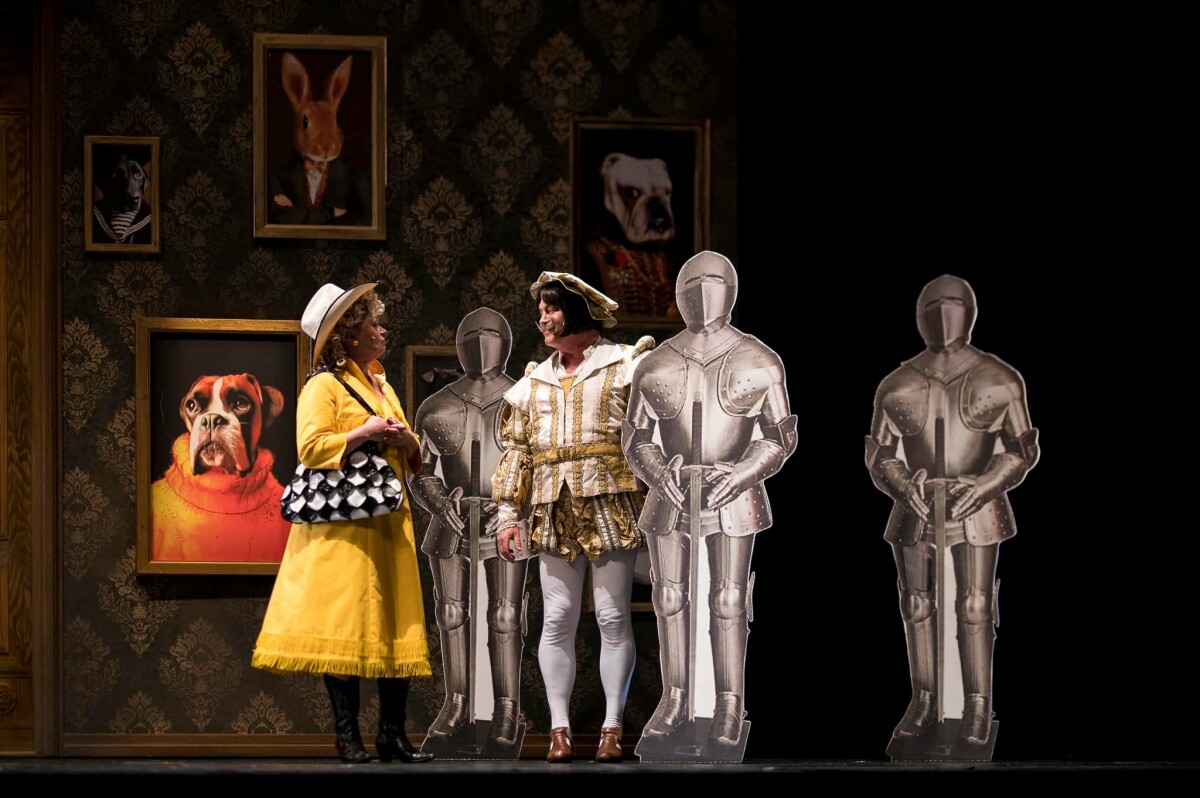
Yvonne Reich as Ellinor Walcott (left) and Hans-Peter Struppe as the aristocratic Waldemar von Brossig in “Prinz von Preußen”. (Photo: Pawel Sosnowski / Gerhart Hauptmann-Theater Görlitz-Zittau)
The cast I saw was Sascha Luder as Harry. Not only is he pretty spectacular looking in Katrin Hieronimus’ stylish 20s costumes, but he sings with clear and unaffected tones (very rare in operetta these days, just listen to any CPO recording from Ischl!), and he can dance too, like a whirlwind. If there ever was someone with perfect leading man qualities, he’s it!
By his side, Jasmin Eberl as Lily was an equally rousing stage presence. The alternative cast, which you see on the press photos, is Merlin Fargel as Harry and Kara Kemeny as Lily.
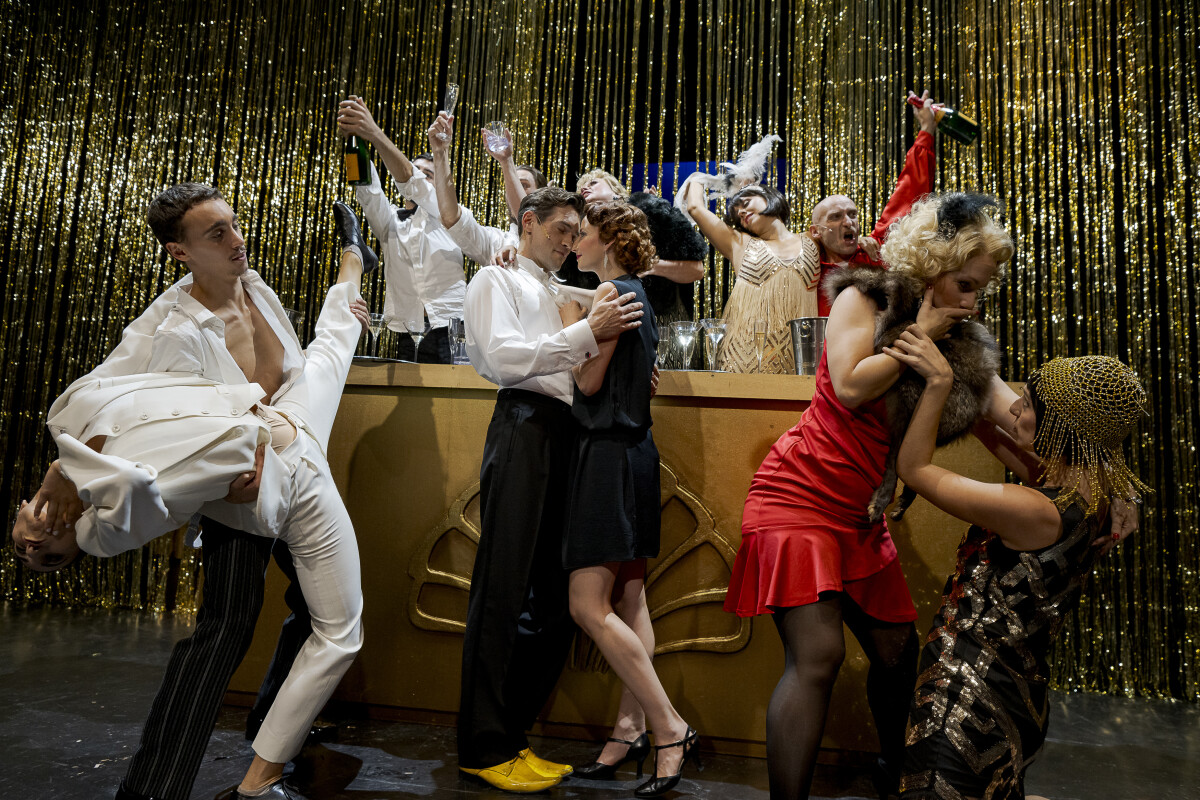
Sascha Luder (in yellow shoes) and the Zittau cast for “Prinz von Preußen”. (Photo: Pawel Sosnowski)
A stand-out performance of highly grotesque quality is Harald Schröpfer as hotel director Strebsam who plays the ideal “Untertan”. It’s amazing to watch. Michael Berner is gangster Max. And Yvonne Reich is a memorable Mrs. Ellinor Walcott, chewing gum factory owner from America and very rich – commenting on the social hierarchies in Germany from a democratic and feminist perspective.
The sparkly orchestrations get a funky performance by conductor Ulrich Kern, with full orchestra. And everyone on stage – chorus and ballet – seems to be having great fun. Which is infectious.
The Moral of the Story
My only regret is that the staging does not emphasize the political moral of the story, as the original 1978 staging surely did. Some might see this as a blessing because it makes the piece more easily accessible today. Other might long for a more didactic interpretation.
The fact that the Gerhart Hauptmann Theater put this on at all (dramaturgy: André Meyer) must be applauded. It’s an interesting piece worth knowing and reviving. It’s an interesting story as well, and it contains music that’s easy on the ear. Why Staatsoperette Dresden or Musikalische Komödie – as the two major houses for “Heiteres Musiktheater” in the former DDR – can’t be bothered to put anything like this on the stage remains their secret. (Staatsoperette did present an interesting exhibition and some concerts devoted to the topic of DDR musicals/operettas, there was also a symposium which, however, the artistic director didn’t attend.)
The next big production to look forward to is Gert Natschinski’s Messeschlager Gisela coming up at the end of this season at Komische Oper Berlin, in a staging by Axel Ranisch and with Adam Benzwi conducting. They, too, have a tremendous cast. And who knows when and where he might see Sascha Luder again … he’d surely be dazzling in “conventional” operettas too, from Lustige Witwe to Fledermaus. Or in Gisela.
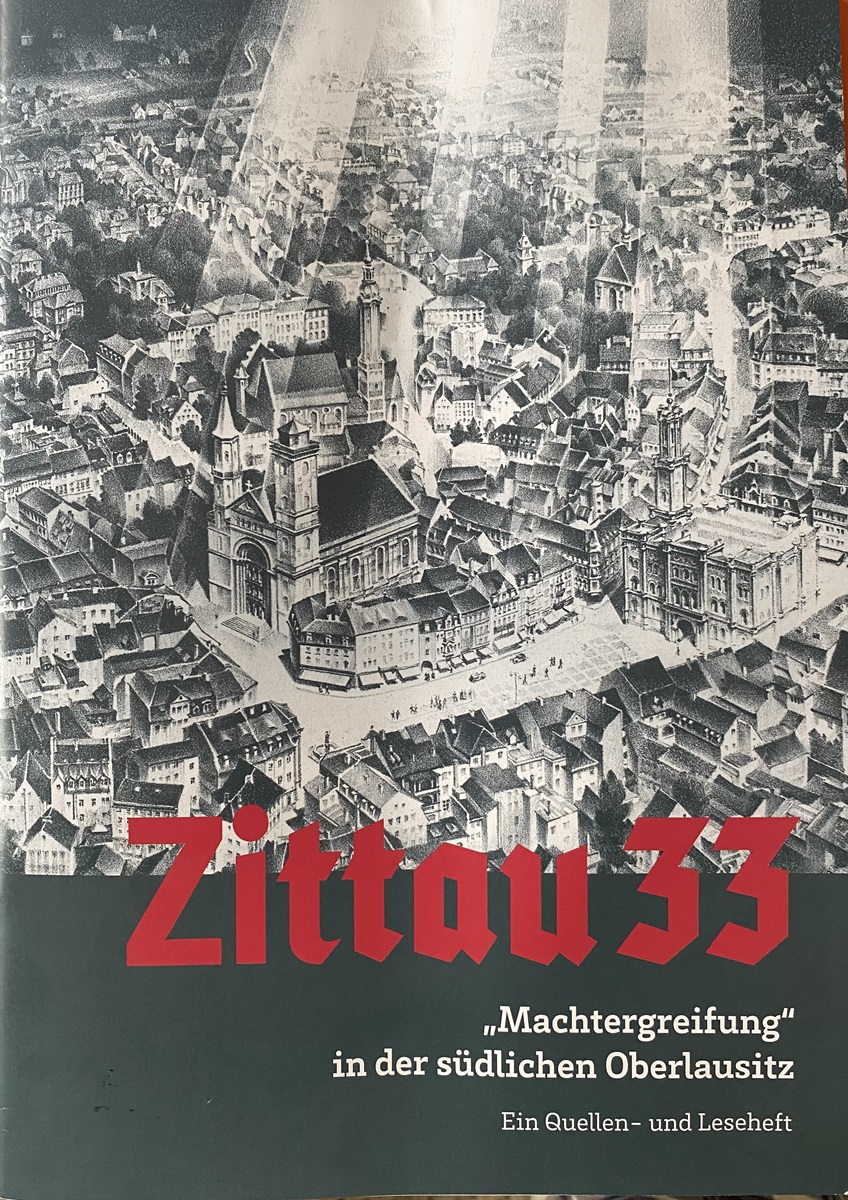
The “Quellen- und Leseheft” for the exhibition “Zittau 33″ with a lithography by Hans Kech from 1933 on the cover. (Photo: Städtische Museen Zittau)
If you visit Zittau for any of the upcoming performances, there is a fascinating exhibition of the city’s history in Nazi times at the local museum. The title: Zittau 33: Machtergreifung in der südlichen Oberlausitz.
Among many other things is presents the history of the „Grenzlandtheater Zittau” which is today’s Gerhart Hauptmann Theater. It opened in 1936 with Weber’s Freischütz and was intended to “fence off” any “Jewish and Bolshevik” influences from Eastern Europe of elsewhere.

The Grenzlandtheater Zittau in 1936. (Photo from “Zittau 33″ / Städtische Museen Zittau)
Today, the theater’s architecture still shows its former history, even though the most recent renovation tries to hide is effectively. But it’s nonetheless a history worth knowing, illustrated in the exhibition with many photographs. There’s also a chapter on the “Grenzlandtheater” in the catalogue (but that doesn’t offer as many pictures of the exhibition itself).
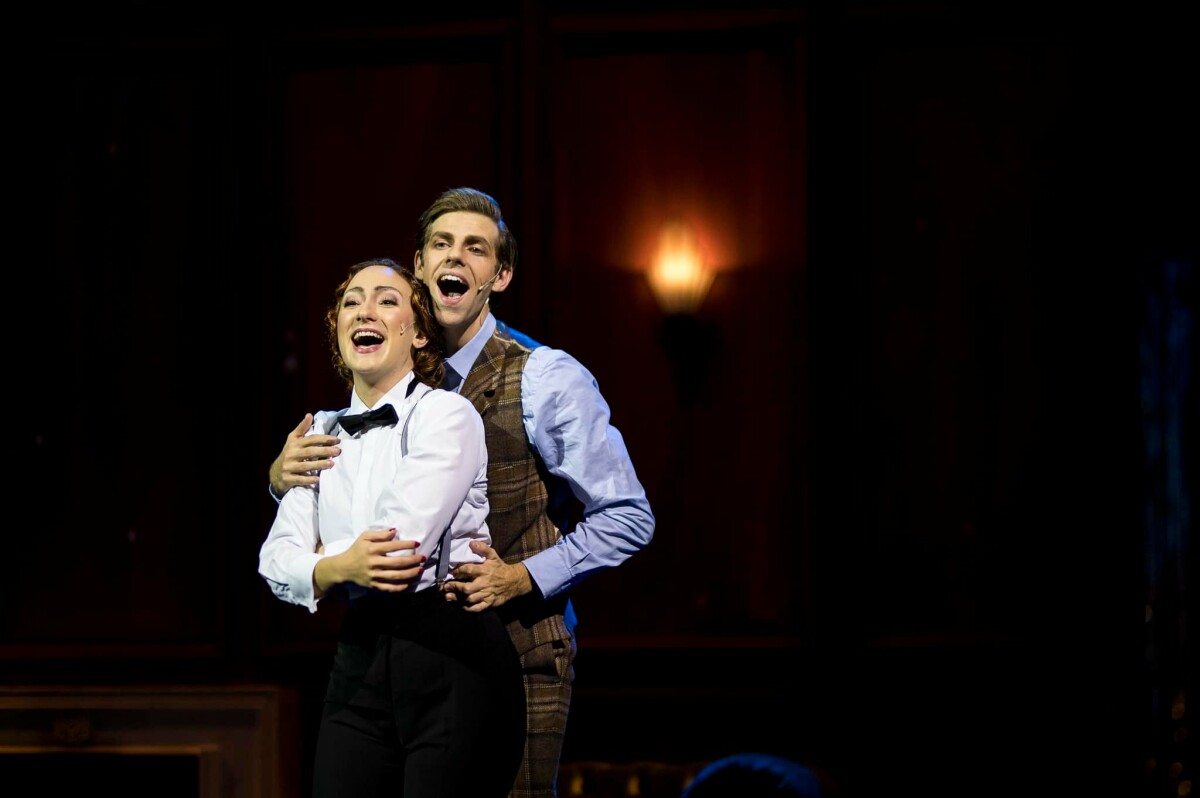
The alternative cast in “Prinz von Preußen” in Kay Link’s production. (Photo: Pawel Sosnowski / Gerhart Hauptmann-Theater Görlitz-Zittau)
For more information on the cast and future performance dates, click here.
